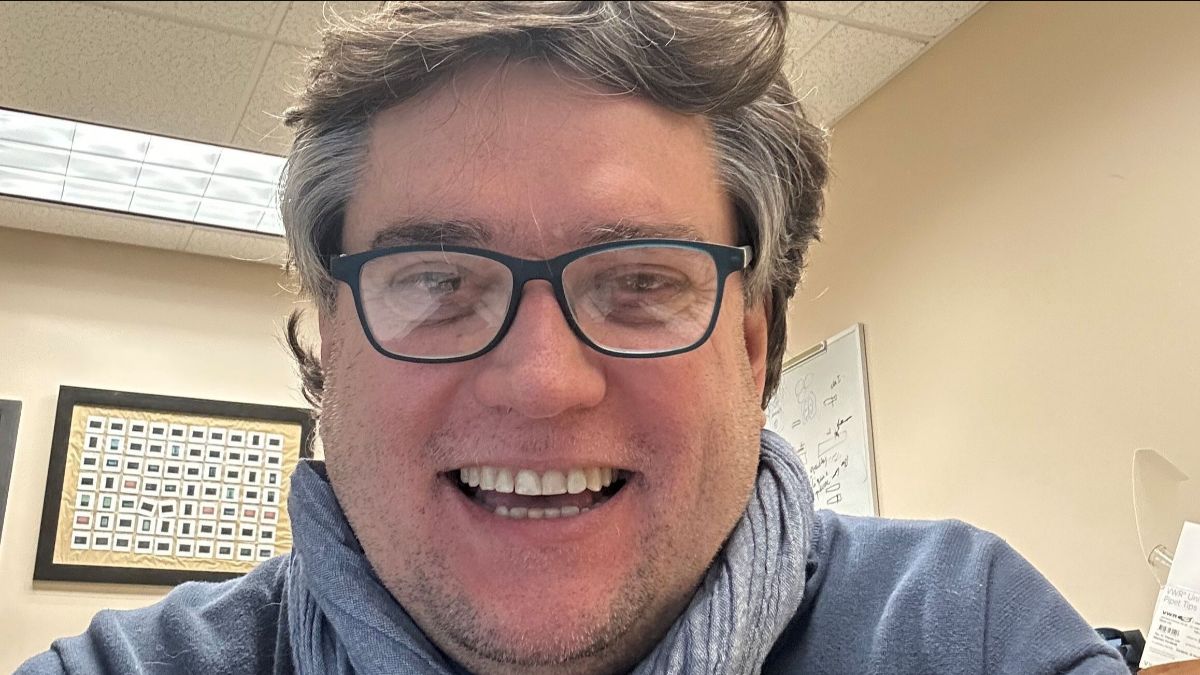April 15, 2025 - In this interview, Professor Patrice Hamel shares how his international journey and multicultural upbringing inspired the creation of STILSA, a program that bridges science and French language and culture through immersive research opportunities abroad for American STEM students.
Can you introduce yourself and tell us about your STILSA program (Students in Life Sciences Abroad), which you founded?
My name is Patrice Hamel, and I’ve been a professorof Molecular Genetics at The Ohio State University since 2006. I completed my academic training in France at Université Paris-Saclay, followed by a postdoctoral fellowship at UCLA from 1999 to 2005.
The STILSA program (Students in Life Sciences Abroad) originated from an initial partnership with NTNU University in Trondheim, Norway. It was designed to provide American students in STEM disciplines with an international experience, with a strong emphasis on biology and related fields such as ecology and medicine, and later expanding to include mathematics and physics. Over time, the program has grown to offer internships not only in universities and research institutes but also in private companies.
STILSA has gradually expanded to other countries. Since 2013, more than 72 students have participated in these exchange programs, something we’re incredibly proud of. More broadly, STILSA has enabled internships in France, at institutions such as Paris-Saclay and the Sorbonne, often with support from organizations like ENGIE in the field of sustainable development. In 2024–2025, we welcomed our first student from the French Caribbean.
What motivated you to combine science and with the promotion of French culture?
I grew up in the French Caribbean, where the French language is experienced in a plural, living form. This background gave me a deep awareness of the diversity within the Francophone world, far beyond mainland France. I actually see myself more as Francophone than strictly French, and that openness has motivated me to integrate French culture into my academic work. STILSA grew out of a desire to share that richness with my students and to help them move beyond the sometimes insular nature of the American university system.
You’ve traveled extensively and carried out research abroad. What led you to choose the United States to pursue your work on the biogenesis of mitochondria and chloroplasts?
My international journey made me deeply aware of the value of intercultural exchange. I spent my childhood between Morocco and the Caribbean, trained in France, completed a postdoc in Los Angeles, and continued my career in the U.S. All of these experiences taught me the richness of multicultural environments. But they also made me realize how few American students have the chance to travel beyond U.S. borders.
STILSA emerged as a natural response to that gap. It was a way to channel my own life experience into building bridges and creating opportunities for students to explore the world. I see it as a mission, passing something on, giving my students the chance to experience what I did through travel, cultural encounters, and personal discovery.
What are your responsibilities as the founder and director of the STILSA program?
First and foremost, I work to build strong partnerships that offer meaningful and enriching immersion experiences. That means carefully evaluating potential hosts to ensure high-quality mentoring and opportunities that align with each student’s profile.
Another essential part of my role is making these experiences financially accessible. With the high cost of U.S. tuition, many students simply can’t afford to study abroad. So, when funding becomes available, I focus on removing financial barriers : covering airfare, providing stipends, or securing paid internships.
Finally, I oversee the selection of candidates. I usually prioritize students who seem likely to get the most out of the experience, both personally and academically. I remain closely involved from the planning stages all the way through their return.
You’re planning to launch a new program called FRESCA. How does it build on or differ from STILSA?
FRESCA (French in Science Abroad) grew out of the natural evolution of STILSA and a need expressed directly by students. Some of them asked to include a French language component, as many were pursuing a minor in French alongside their science majors. That led me to consider a program that would intentionally connect science with the French-speaking world.
The idea took shape in collaboration with Sarah Grace Heller, a French professor in the Department of French and Italian at Ohio State. Together, we identified a growing demand for programs that combine science and French, giving students access to academic or professional experiences in Francophone environments.
FRESCA builds on the foundation of STILSA but adds a stronger linguistic and cultural dimension. It’s aimed at science students with an interest in the French language and culture, and offers internships in labs, universities, or companies where they can apply both their scientific knowledge and language skills.
How do you encourage students to participate in these programs?
First and foremost, by listening closely to them. In fact, FRESCA was inspired in part by student feedback. Staying attuned to their needs has also helped STILSA expand into disciplines beyond biology; many students from fields like math and physics have expressed interest, even though those areas fall outside my own specialty. I’ve worked to ensure that these students, too, can benefit from the program.
In your view, how does international mobility enhance the academic journey of American students?
Today, professional experience is increasingly valued, and being able to engage with scientific topics in French gives students a unique advantage in the job market. It enhances their résumés and opens up new career paths.
More broadly, learning another language cultivates open-mindedness. It helps students become more attuned to the complexities of the world, cultural nuance, and different ways of thinking and doing. That awareness also translates into human relationships: speaking another language sharpens one’s sensitivity to social and intercultural dynamics.
Find out more about STILSA



